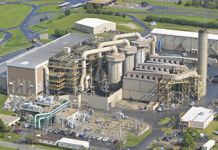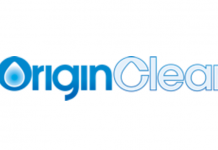by Debra Fiakas CFA
As part of its program to promote beneficial reuse of carbon dioxide, the Department of Energy awarded a total of $27.2 million ($3.0 million in the first phase and $24.2 million in a second phase) to a consortium led by alternative energy developer Phycal, Inc. (private). According to the DOE website, Phycal is to develop an integrated system to produce biofuel from microalgae cultivated with captured carbon dioxide (CO2). The biofuel is to be blended with other fuels for power generation or as drop-in diesel or jet fuel.
It is a bit of a stretch to see Phycal’s project as a bona fida “reuse” of CO2 that would have otherwise gone out into the atmosphere. The company ferments the root food crop cassava (also called yucca or manioc) to produce ethanol. Nonetheless, this is more by-product that final product, because what Phycal really needs are the sugars and CO2 that are also produced in the fermentation process. That is because Phycal is principally focused on algae-based biofuel production and CO2 is the critical food source for growing algae. Sugars give the algae an extra boost before the oil harvesting step.
![Phycal+Process[1].png](http://www.altenergystocks.com/wp-content/uploads/2017/08/Phycal_Process_1_.png)
The design does have a certain appeal. Algal oil can be turned into a drop-in diesel or jet fuel that has significantly more versatility and lower distribution costs than ethanol. Integration of the dual ethanol/biofuel plant affords precious economies that are vital to turn out a cost-competitive fuel product.
Phycal’s development partners include General Electric’s (GE: NYSE) Global Research Group and Seambiotic (private) among others. The group has set up a pilot cassava/algae farm near Hawaii’s Wahiawa, Oahu. Phycal has some confidence in its ability to iron out the kinks in its process. In late 2011, the company signed an off-take agreement with Hawaaiian Electric for delivery of 100,000 to 150,000 gallons of algae-based biofuel beginning in 2014. The biofuel will be tested at the utility’s Kahe Generating Station.
Unfortunately, only accredited investors are in a position to get involved with Phycal at this stage in the company’s development. A stake in its partner General Electric is a play on the myriad markets that are the targets of GE’s broad product portfolio.
Given that the world economy has yet to agree on a value for the liability of creating toxic CO2 emissions, it is impressive that work on CO2 sequestration has progressed at all, let alone the next step of finding uses for CO2. Even though “carbon capture and use/reuse” gets little attention from investors, it appears to be quietly underway. We expect the economic impact will be equally quiet, manifesting in lower costs rather than generating more visible new revenue streams. However, knowing which companies are successfully harnessing the CO2 beast could be an advance look at higher earnings.
Basically, CO2 can be used in three major areas: polymers, biofuels and inorganic materials. The previous post “Capturing CO2 for Environmental Remediation” was about Alcoa’s (AA: NYSE) attempt to use CO2 for treating clay soil for environmental remediation – an inorganic material. Phycal’s project is an example of biofuel production. Next post will be a look at a polymer application.
Debra Fiakas is the Managing Director of Crystal Equity Research, an alternative research resource on small capitalization companies in selected industries.
Neither the author of the Small Cap Strategist web log, Crystal Equity Research nor its affiliates have a beneficial interest in the companies mentioned herein.








